In this post, I’ll share what my subject selection process looks like and the questions I ask myself in determining if a subject is worth painting. This is an important topic that doesn’t get enough attention. Most of my “painting” time is spent searching for inspiration and interesting subjects to paint.
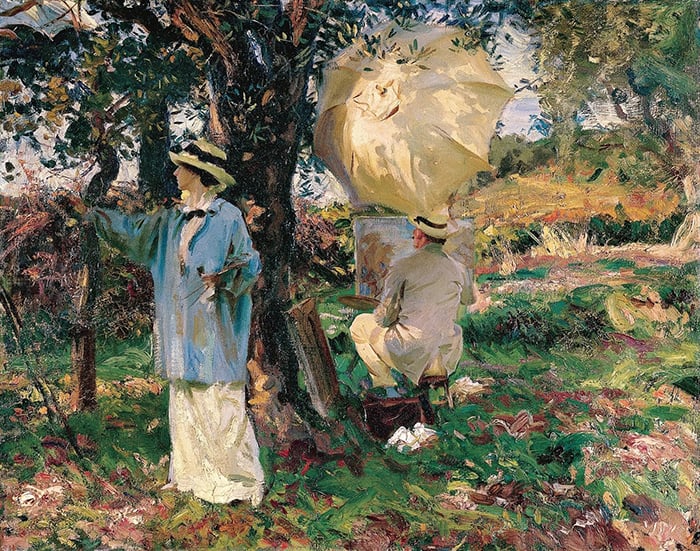
Overview of My Subject Selection Process
Here’s what my subject selection process broadly looks like:
Step 1. Gather inspiration and ideas.
Step 2. Create a shortlist of promising subjects.
Step 3. Narrow it down to one using certain criteria.
Step 4. Time to paint!
Sometimes this process happens within a few minutes, and sometimes it happens over days or weeks. It’s dynamic, not fixed. Also, keep in mind that this is just what I do and what works for me might not work for you. Don’t ever feel pressured into following my lead or that of other artists.
I’ll go into more detail on each step below.
Step 1. Gather Inspiration and Ideas
This step is a constant for me. I’m always gathering inspiration and ideas. Though some times are more urgent than others, such as when a blank canvas has been sitting on my easel for a while.
The most important thing is to be proactive. Stay busy and always be on the lookout for ideas and subjects. As Pablo Picasso put it:
“Inspiration exists, but it has to find us working.”
Visiting new places helps. Particularly hard-to-reach places. For whatever reason, I find the best inspiration at hard-to-reach places—mountain peaks, on long hikes, or while exploring the wilderness. If I stay inside my studio, it doesn’t take long for inspiration to dry up.
It also helps to do activities outside of art. For me, that means fishing, kayaking, running, weight lifting, spending time with my family, or visiting the local parks. This helps relax my mind so that ideas can come more freely. Forcing yourself to be switched on all the time is counterproductive and leads to burnout. Time away from the easel is essential.
I always carry a camera (my phone) to take photos of potential subjects. I have accumulated thousands of reference photos over the years. I also frequently write notes about subjects, ideas, and observations. Ideas are fleeting and I must record them on the spot.
I also like to do studies or sketches on location. These complement reference photos nicely. Photos are convenient but there’s no substitute for studies done right there and then.
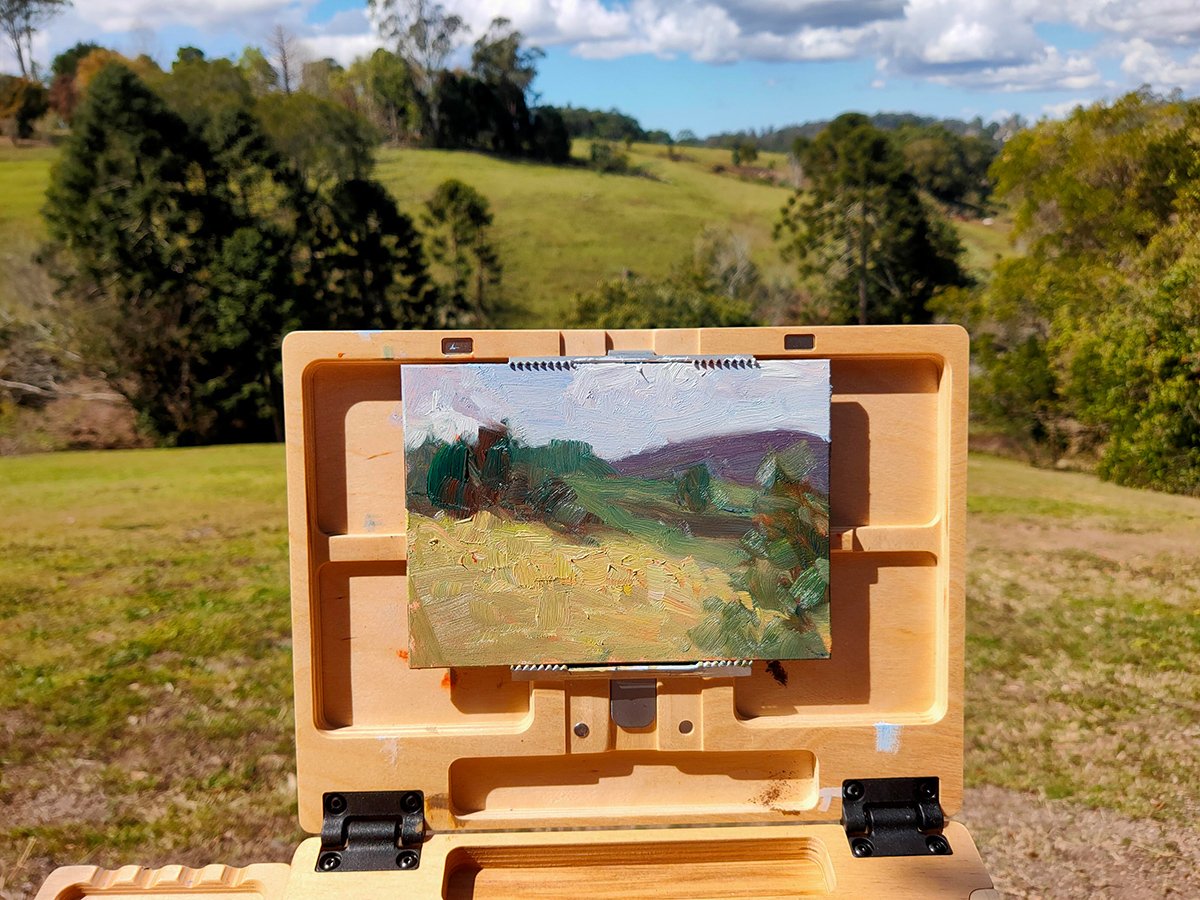
Step 2. Create a Shortlist of Promising Subjects
This step is all about sifting through the vast amount of inspiration and ideas and finding gold. I don’t go too deep on this step. Rather, I step back and look at everything from afar. If anything catches my attention, I take a closer look and consider adding it to the shortlist.
In practice, this usually involves going through my recent photos and “starring” any that have potential. This saves them in a favorites folder on my phone (which you can see in the screenshot below). I might also take a look at my recent sketches and studies. If a study or sketch appears promising, I’ll take a photo of it and add it to the favorites folder for easy reference.

Step 3. Narrow It Down to One (Nine Questions I ask Myself)
To determine if a subject is worth painting, I broadly run through the following questions:
What’s the big idea? This will form the foundation of the painting. The stronger the idea, the stronger the painting. The idea doesn’t need to be complex. It might be as simple as an interesting display of light and shadow. But it needs to be strong enough to compel you to paint it.
Does it have any sentimental significance? Perhaps the subject is a child or relative, or a familiar landscape, or the home where you grew up. Sentimental feelings are powerful and can form the backbone of a painting. They also add a personal element to your work.
Is it appropriate for my skill level (not too easy or too hard)? The subject should be challenging but not too far outside your current skill level. If you’re just starting out, trying to paint a Sargent-like portrait from life would likely end in tears and a muddy canvas.
Do I need to make any adjustments? Is there a way to convey the subject in a better and more interesting way? Can I crop the photo or capture the subject from a different perspective? Sometimes a few adjustments can take a subject from good to great.
What does the finished painting look like? If I cannot see the subject as a finished painting, or I don’t like what I see, then the subject isn’t worth painting.
Does it excite me? I should feel compelled to pick up a brush and paint the subject.
What medium will I use? Some subjects have characteristics that suit certain mediums. For example, oils are particularly effective at capturing the texture and detail of the landscape. Whereas watercolors are particularly effective for “quiet” and delicate subjects. This means the medium I want to work with will somewhat dictate what subject I paint.
Are there opportunities to exercise my artistic license and showcase my skills and techniques as an artist? I prefer subjects where I have a bit of room to move in terms of my artistic license and showcasing a bit of flare.
Do I want to paint it? This is a simple but important question. Sometimes a subject will tick all the boxes but for whatever reason, I feel no urge to paint it. Perhaps it’s just not the right time, or perhaps I don’t feel confident in accepting the challenge.
Step 4. Time to Paint!
Once I have selected the subject, it’s time to get to work. I find it important to get straight into it. Strike while the subject is fresh in my mind and I’m excited to paint it. Don’t procrastinate.
It’s also important to carry the ideas and energy through the rest of the painting process. What was it about the subject that initially caught my eye? What were my first impressions of the subject? This must be conveyed through the painting.
Other Tips and Comments
If there’s a subject I want to paint but I’m not completely convinced, I’ll often sit on it for a day or two. If I want to paint it after that, then I get to work.
There are also times when a subject is so intriguing and compelling that I must paint it immediately. I listen to these feelings; there’s usually a reason for them.
It’s essential that the subject sparks some kind of excitement in me. I must be excited to paint it. Otherwise, why bother? I have many other things I could be doing. Most of my failed paintings started without a spark or enthusiasm for the subject. Usually, it was a subject that looked appealing from a technical standpoint but otherwise didn’t excite me. Trying to force a painting out of these subjects is a bad idea. This is why I spend so much time looking for ideas and inspiration. Truly interesting and exciting subjects are hard to come by. You must put in the work to discover them.
Some Recent Subjects and Why I Painted Them
I’ll run you through a few of my recent subjects and why I painted them.
Chontele and Elora in the Garden, 2022

Why I painted this subject:
- It’s a sentimental subject with Chontele and Elora in my parents’ backyard, where I spent much of my childhood. I tried to convey my feelings and energy through the painting.
- It has an interesting color theme, with the sea of greens as a background against the soft pastel colors of Chontele and Elora.
- Chontele and Elora have a subtle glow as light bounces off them.
- It’s a challenging subject, but not out of reach. I mostly paint landscapes and this was one of my first attempts at including people.
- There are opportunities for conveying interesting brushwork in the background.
Fraser Island, Sunset, 2023

Why I painted this subject:
- Chontele and I got married on this trip.
- The sunset colors are striking and contrast nicely against the dark jetty colors.
- There are opportunities for using broken color and energetic brushwork to convey the sky and water.
- There are a few subtle and interesting details, such as the green lights and vague figures along the jetty.
- The composition is strong and appealing.
Perth Gardens, 2023

Why I painted this subject:
- It captures a pleasant memory from Perth. Chontele, Elora, and I traveled there at the start of 2023. This was one of the gardens. This was just after we failed to make our way through one of those large hedge mazes.
- It’s a challenging subject with a vast amount of information. I had to simplify in order to make sense of it all.
- There’s a beautiful dance of color and light and it’s interesting how one area melts into the next.
- There are opportunities to showcase visible brushwork, color variance, and texture.
Key Takeaways
- Stay busy and always be on the lookout for ideas and subjects. As Picasso put it, “Inspiration exists, but it has to find us working.”
- I find the best inspiration at hard-to-reach places—mountain peaks, on long hikes, or while exploring the wilderness. If I stay inside my studio, it doesn’t take long for inspiration to dry up.
- It’s counterproductive to be always switched on and thinking about painting. Time away from the easel is a must.
- When sorting through all your inspiration and ideas, take a step back and look at everything from afar. If anything catches your attention, take a closer look and consider adding it to the shortlist.
- It’s essential that a subject sparks some kind of excitement in you. You must be excited to paint it. Otherwise, why bother?
- It’s important to carry all the ideas and energy from subject selection through the rest of the painting process. What was it about the subject that initially caught my eye? What were my first impressions of the subject? This must be conveyed through the painting.
Thanks for Reading!
I appreciate you taking the time to read this post. Feel free to share with friends. If you have any thoughts or questions, feel free to add them to the comment section below. If you ever want to learn more, start with my fundamentals course.
Happy painting!

Dan Scott

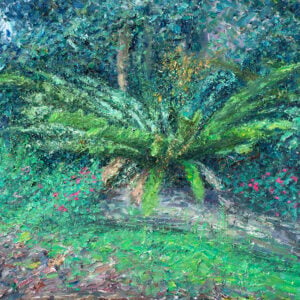
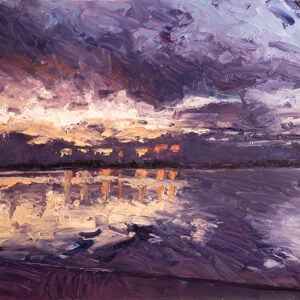
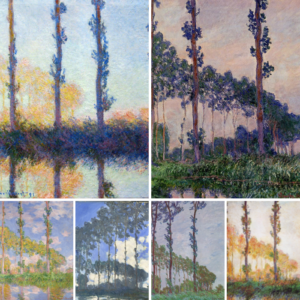
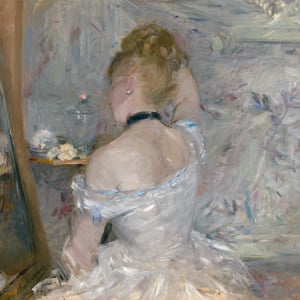


Great works Dan!
Thanks Dan , I ove receiving your e-mails find them very helpful and interesting. J. Hammersley – Pastel Artist and oils
I thought I signed up for painting for beginners! All I am receiving is articles without painting steps. I am no better from reading physolphy!!!
Keep reading the emails as they come. Dan has so much knowledge that we don’t even realize is so important in motivating us to be better artist. Even if you are a beginner you always get a “little something” from his emails
Hi Nick
I will email you directly on how to access the painting course on our student site.
Chontele
Thanks Dan!
Great way to start the week.
It is Fall here and I plan to paint Maple Leaves this week. I have been photographing in the yard!
Beautiful!
Hi Dan…. Basically, I use the same criteria when deciding my next painting. Your comment on ‘emotion’ is especially valid in my case….. maybe the word ‘passionate’ would be even better!
Thanks Dan.
This is just what I needed! I think I will keep this article on the top of my list to read it everyday. I agree that this subject doesn’t get enough attention but I think you have addressed it very well. I especially like the 9 questions to ask yourself and I love seeing your paintings and hearing why you painted them! This is all very helpful to me and an inspirational article! Thank again!
Thanks for this “booster shot” – especially helpful when crawling back from apathy.
Really interesting and will help me when looking for ideas in my new home country in Spain
Thank you for this very useful article which is well worthwhile keeping in the same album with the favourites, preferably as the first item in it! It’s all too easy to settle for anything when you are searching for a subject to paint and as you point out that usually doesn’t turn out too well.
I too use photos for inspiration and references. Daily visuals and a cell phone camera are a must for prompting me to a subject on canvas. I ask myself why I want to paint the given topic and do I think I can convey those emotions of my viewers. It’s a journey worth traveling! Thanks Dan.
Thank you for sharing your thoughts on how to decide what to paint and why you chose it. I am learning how important composition is for us beginners so any feedback from a professional is helpful.
In Step 2, it would be interesting to see how your reference photos came together in a final painting.
Thanks Carole.
Not all of Dan’s “favorites” have been painted yet. But you can see a few of them here on our gallery page on the website. We update this page on a regular basis.
https://drawpaintacademy.com/gallery/dan-scott-paintings/
Thanks Carole!
Chontele
Great useful article, thank for sharing!
This is great instructional information, primarily because you included the photos and paintings that go with them! Thanks.
Thank you Dan. This article was very reassuring as I do similar things to you. Well written and easy to follow.
MaryLou
Hi Dan,
Thanks for your recent article on your process for deciding what to paint.
Request that you offer tips on your process for judging the scale of the elements in a reference photo versus their representation in a painting.
I just rushed over those steps.
Love it, will be back to read slow and follow you
Thank you so much.🌞
Thanks for sharing your thoughts and experiences. I have always found them useful and inspiring.
I work as a teacher in Assisted Living and we have a fine arts class. I still consider myself somewhat of a beginner.. I use all the information I get from you and others all the time. It makes me feel like I’m more professional. So thank you very much.
I have noticed that as I put more and more paint on the canvas, the more the brushwork shows. So my challenge has been to transition into using brushstrokes as a feature of the painting. It’s taken years, but I am beginning to understand now. Thanks for assuring me that I’m going in the right direction, Dan.
Great Topic – with excellent examples!
Dan, I find that there is too much inspiration! Is that possible? Maybe it’s just the period in my time as an artist. I am nearing 350 paintings. It’s strange, but when I look back at my work, I can really see where my ideas were simplistic and not well considered. But at the time, the subject motivated me. So that’s how I do it. Being an amateur artist, considering a second career in art, I am much more into this process now.
Thanks Dan so much for this timely information. I so often have multiple images swirling around in my mind and this approach certainly organizes said ideas.
This info makes for a great sagway on how to create a body of work?
Great article, thank you. I use to collect paper and photo reference and kept them in subject headings, nowadays I have over 35,000 photos on my phone! I create albums on my phone eg: coastline, boats, rivers, beaches, street scapes, skyscapes, dry landscape, old buildings, still life, horses, portraits etc.
I also have an album of “paintings to study” where I keep pictures of artists work that excites me, so I can study them. Everywhere I go, I take photos. If something catches my eye while driving, a great play of light and shadow in a paddock, I’ll pull over and take photos.
Most smart phones allow you to record information about the photo eg location, time and notes, which is a useful feature.
So I always have plenty of reference material to choose from… it’s the choosing that’s the thing!
Thanks Dan, for the tips on narrowing down selection – other people’s ideas are always helpful.
I began painting during Covid and somehow found you on the Web. I’m 75. I have found that it is never too late to have finally found what you were meant to enjoy. I have never taken an art course, but I have learned so much from trial and error and from reading your emails. I paint with watercolor and acrylics. Maybe one day I’ll try oils. Hello to everyone from Mississippi!
Me too – started during Covid Try water soluble oil paints as they are a good transition
Thanks Dan, very useful article- definitely one to keep. Your paintings look inspiring.
Great post, thank you Dan. For me in particular it’s important to look at your sample paintings. I err on the side of trying to have a perfect image as if it were a photograph, so of course, I get discouraged when I can’t achieve it.
Excellent article. Just what I needed at this moment.
Thank you so much.
I am in my late 70’s. I live in a senior living community. Many of the activities you do to gain inspiration are beyond my ability to do anymore. However, I have a life time of experience to draw from. In addition, I look at the various Pinterest photos for inspiration. I also think, “Is this picture within my scope of abilities to do?” Most of my work is with landscapes and I rarely put people in the painting. I have many years of various crafting experience using pastels, watercolors, oil pastels, alcohol markers, water dye based markers, a little experience with oil paints, and now acrylics. My community home is offering 2 hour classes using acrylics. I am trying to use different techniques to broaden my painting skills. Everyone is painting different subject matter so the “teaching’ the instructor utilizes is very individualized. I am painting pictures for my family — children and grandchildren.
Dan what a gem of heart and sharing you r.
You’re gifts enable so much in so many people
Happy healthy life to you and your family
Thank you again for sharing your thoughts and practical suggestions, and I’m ready to take another look at my photos. Your insights always encourage me. Thank you!
Hi Dan
Love to read your emails, very interesting and informative.
Thank you Dan for these tips, I am a beginner and find your emails a great
balance of practical and intuitive advice. We all take something from your sharing
of experience and talents.
Hi Dan, this is a very interesting piece. Thanks for sharing your thoughts.
Just love your paintings. So beautiful. Thank you for sharing your thought process.
Like all the comments I’ve just read, I agree completely. I feel I’m a pretty good painter at 74, and like painting at home. There’s always more to learn and I love reading your art thoughts. I must say I can see big progress in your painting, especially the garden one. When a painting is so much better than the reference photo, it’s pretty successful…and I’m not talking realistic! The impressionist feel that’s loose and painterly is what I aim for.
Many thanks for your words of wisdom.
I love these! It would be great to know the size of the canvases and if brush and knife etc
What a fantastic article. It was inspiring in itself. Thank you for including your photo references and paintings. I’m still at the stage in my work where I am learning what I want to paint, what to include, how to focus, and when to go “off book” from my references. So this article comes at just the right time. 😊
I also was particularly struck by you comment on pairing the medium with your subject. So true!
Thank you again for this!
Dan, thank you so much for sharing your thoughts and how you approach a painting. It’s given me a lot to think about.
Most of my paintings I try to make them realistic. But I would really like to paint more your way. Impressionistic? But I haven’t a clue how to begin. I took a class with Jane E Jones on broken color, in 2013, but had a hard time getting into it. Can you help ? Thank you
This is great and so helpful. I tend to spend way too much time looking for a subject to paint. I like the way you have broken down your process into bite-sized steps. This is something I will try.
Great summary, Dan. Thank you for sharing your selection process. It is a subject I also have been reflecting upon of late. Mine is similarly structured but you articulate well several details that I hadn’t considered. The PP quote was poignant.
Be well & creative!
Hi Dan,
I haven’t been painting for a couple of weeks. I love this article on finding stuff worth painting. I’ve taken on a commission of 2 portraits and am finding the second one really hard ie: I don’t like the subject. I said yes to painting them but should have said I needed better photos. I will stop now and try to get a better shot. After I finish, I will start a series of painting of our stunning new black lab. BTW the painting of your wife and daughter in your parents back yard is absolutely stunning. More please!
Great work’s